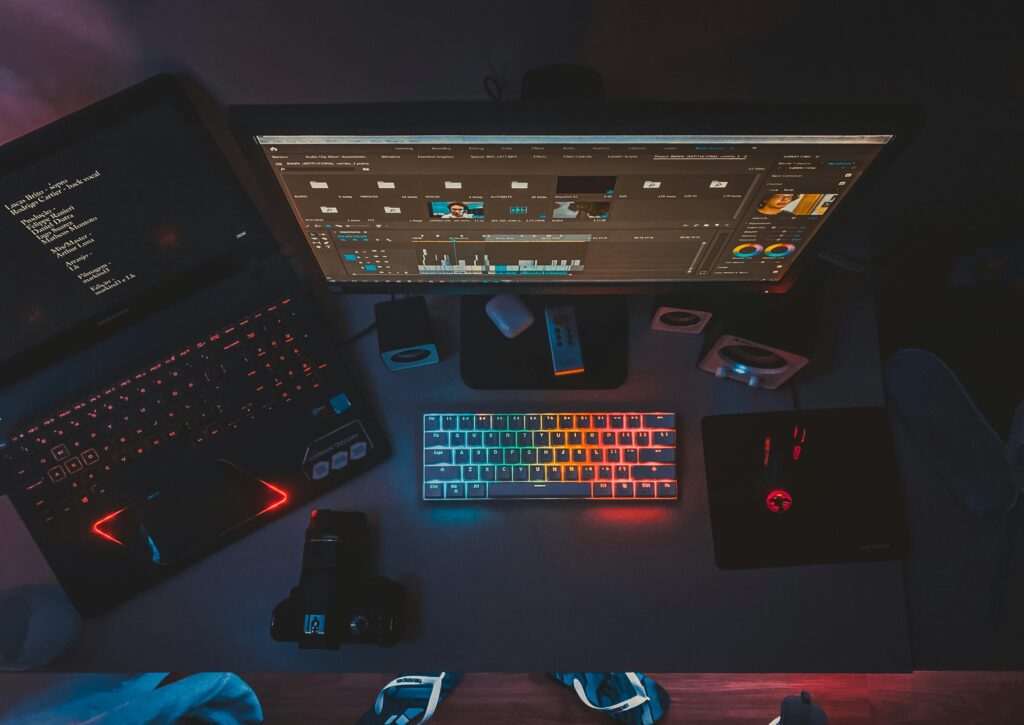In contemporary society, it is widely acknowledged that the internet is an indispensable aspect of our daily lives. However, prolonged usage of digital devices can lead to digital eye strain, a matter of significant concern in the field of ophthalmology. It is imperative that individuals, both children and adults, take measures to minimize their time spent on digital devices and employ practices that reduce the potential for digital eye strain. Such practices may include, but are not limited to, adjusting screen settings, reducing screen time, and taking frequent breaks. By adopting these practices, individuals can continue to reap the benefits of technological advancements while prioritizing their health and well-being.

WHAT ARE THE SYMPTOMS OF DIGITAL EYE STRAIN?
According to recent studies, a significant proportion of individuals, specifically 80%, report experiencing visual symptoms associated with digital eye strain. These include ocular fatigue, dryness, blurred vision, headaches, excessive tearing, and ocular pain. Identifying these symptoms is of utmost importance in the management of digital eye strain, and timely intervention can significantly improve the quality of life of affected individuals.
HOW TO REDUCE SCREEN TIME?
In today’s world, it is essential to reduce screen time to avoid the negative impacts of anxiety, depression, and short attention spans. We can achieve this by engaging in meaningful face-to-face conversations, arranging in-person meetings, and channeling our focus towards productive activities such as board games. Furthermore, implementing phone-free zones in our homes and workplaces can help us to reduce our screen time consumption. Encouraging children to play outside and exposing them to natural sunlight can also help lower the risk of nearsightedness called Myopia. The role of licensed professionals is instrumental in facilitating effective vision therapy for visual comfort and occupational productivity. By adhering to these guidelines, we can strive to maintain a healthy balance between our digital and physical lives, allowing us to lead happier and more fulfilling lives.
HOW VISION THERAPY IS COPYING UP?
Optometrists are dedicated to helping people overcome the challenges of computer vision syndrome. With their expertise and innovative techniques, they are constantly striving to improve vision and enhance the quality of life for those affected.
- 20:20 Rule
Excessive use of digital devices causes digital eye strain, which is a significant concern for our eye health. To reduce the likelihood of digital eye strain, we must adjust screen settings, take frequent breaks, and reduce screen time. Optometrists suggest implementing the 20-20 rule and improving lighting and ergonomics. Let’s prioritize our well-being and take conscious efforts to protect our eyes while using technology. This way, we can continue to benefit from technological advancements without compromising our health.
2.Increase the text or font size
By simply reading bold text without squinting, we can take a step towards improving our eyesight and reducing eye strain. This small practice can have a significant impact on our overall eye health and well-being, allowing us to focus better and absorb information with greater ease. Let’s embrace this simple yet effective practice recommended by optometrists and take charge of our eye health today.
3.Usage of bigger screen
According to experts in the field of vision, an increase in digital screen size can result in a reduction of eye strain. As such, it may be prudent to consider the benefits of larger screens when designing and selecting digital displays. By doing so, we can create a safer and more comfortable user experience while still leveraging the benefits of technology.
4.Change your screen colour
To reduce the strain on your eyes, it’s recommended to use a blue light filter app that can alter the screen color from blue to yellow.
5.Add moisture
To help prevent gritty eyes, The American Academy of Ophthalmology recommends adding a humidifier to your workspace. This simple addition can be an effective way to promote eye health and increase comfort while working.
6.Blue light filters
It is wiser to use a blue light filter to reduce eye strain and improve sleep quality when using screens for extended periods.
7.Working with vision therapists
It is strongly recommended that one should schedule a quarterly visit to a qualified vision therapist. This will facilitate the receipt of expert guidance on the use of an anti-glare screen, a new type of chair, and the prescribed distance between the computer screen and the eyes. Such measures, when implemented, will not only prevent further visual impairments but also mitigate the possibility of further visual hazards. Additionally, it is worth noting that the vision therapist may recommend the use of computer glasses with the appropriate power to enhance visual acuity.
It is of utmost importance to prioritize one’s vision health and seek guidance from a trusted optometrist or ophthalmologist who can provide professional visual therapy or training modules. By adhering to the recommended steps, one can ensure that their vision is well-maintained. Optometrists and ophthalmologists are equipped with the knowledge and expertise to provide bespoke visual therapy or training modules, tailored to your specific needs. It is recommended that you entrust your vision health to these professionals for their guidance, as they possess the skills and experience to offer a comprehensive service. It is essential to remember that vision is a precious commodity and deserves to be treated with the utmost care and attention.
